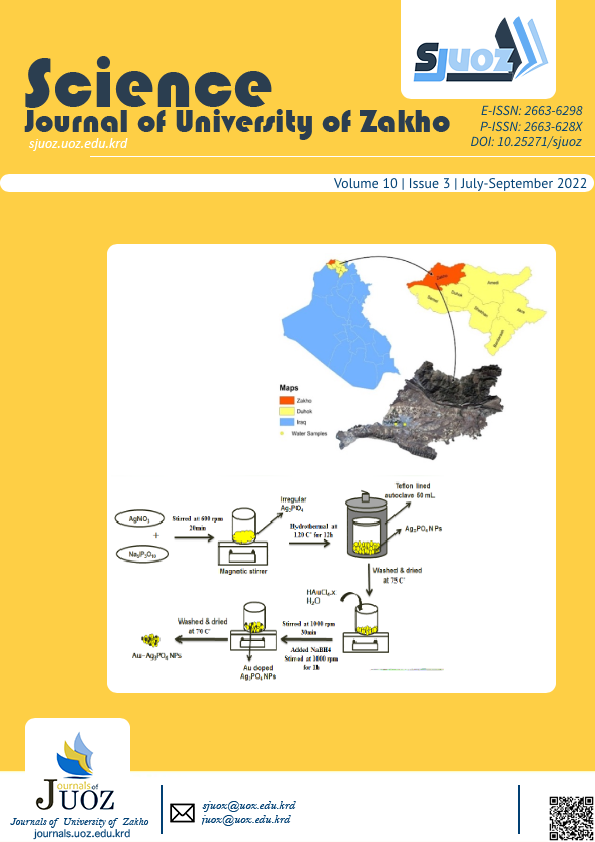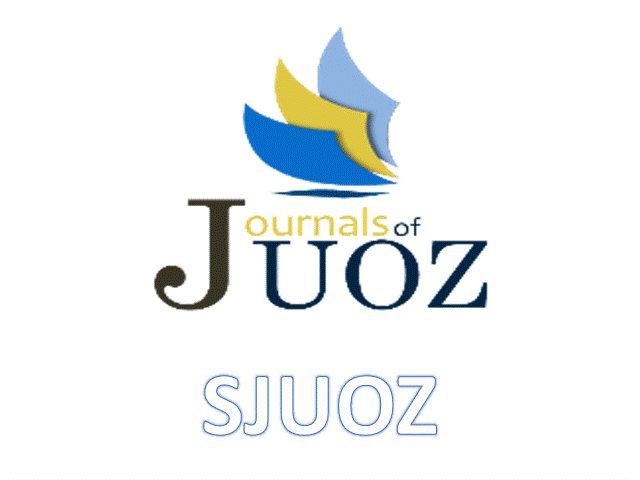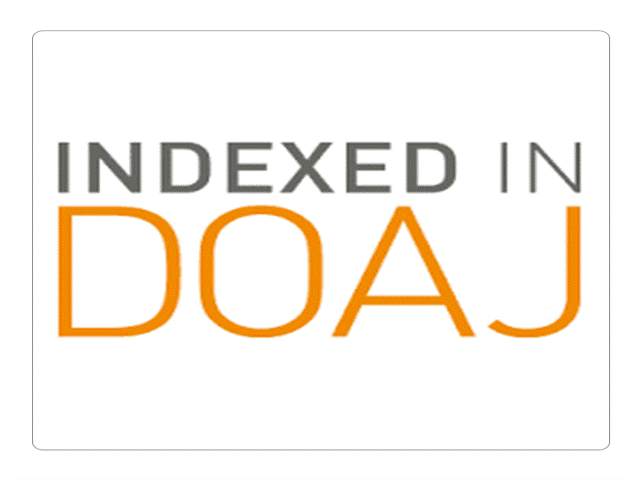Staphylococcus aureus Among Athletes In Zakho City, Kurdistan Region, Iraq: Nasal Carriage Rate, Risk Factors, and Antibiotic Sensitivity Profile
DOI:
https://doi.org/10.25271/sjuoz.2022.10.3.929Keywords:
Staphylococcus aureus, Antibiotic Sensitivity, Nasal Carriage, Athletes, Zakho, IraqAbstract
Background and aims: Staphylococcus aureus is a leading cause of infectious diseases and responsible for outbreaks among athletes’ team. The aims of this study were to determine the prevalence rate of S. aureus among athletes, and evaluate the antibiotic resistance and risk factors associated with S. aureus isolates.
Materials and methods: We performed a cross-sectional study to determine the S. aureus nasal carriage rate among athletes practicing different sports. Swabs were collected from the anterior nares of 510 athletes aged between 14-55 years. Conventional bacteriological tests were used for the identification of the S. aureus isolates. The antibiotic sensitivity test was performed according to the Clinical and Laboratory Standards Institute (CLSI).
Results:Out of recruited samples, S. aureus carriage rate among athletes was 156 (30.2%). The highest infection rate was reported among boxing athletes 8/24(33.33%) and gym 80/245 (32.65%). S. aureus colonization was significantly higher among the athletes who had low body mass index (p=0.001), longer duration of training/day (p=0.001) and higher number of training session /week (p=0.012). S. aureus carriage was significantly higher among male athletes 119 (77.27%) than female athletes 35 (22.73%) (p=0.002). The oxacillin resistance rate was estimated at 26.61%. S. aureus isolates were highly susceptible to rifampicin, gentamycin and fusidic acid.
Conclusion: Nasal carriage of S. aureus is relatively high and this bacterial was predominant among male athletes and a relevant resistance to antibiotics used for treatment of S. aureus infection. It is recommended that the prevention control practices be implemented to reduce nasal colonization, and risk factors associated with S. aureus among athletes. Further studies on S. aureus carriage should include throat sampling among athletes
Downloads
References
ASSAFI, M., MOHAMMED, R. & HUSSEIN, N. 2015. Nasal Carriage Rates of Staphylococcus aureus and CA-Methicillin Resistant Staphylococcus aureus among University Students. Journal of Microbiology Research, 5, 123-127.
BARAH, F. J. S. M. J. 2012. Prevalence of herpes simplex types 1 and 2, varicella zoster virus, cytomegalovirus, immunoglobulin G antibodies among female university students in Syria. 33, 990-994.
BITRUS, A., PETER, O., ABBAS, M., GONI, M. J. V. S. R. & REVIEWS 2018. Staphylococcus aureus: a review of antimicrobial resistance mechanisms. 4, 43-54.
BRUGGER, S. D., BOMAR, L. & LEMON, K. P. J. P. P. 2016. Commensal–pathogen interactions along the human nasal passages. 12, e1005633.
COHEN, P. R. 2008a. The skin in the gym: a comprehensive review of the cutaneous manifestations of community-acquired methicillin-resistant Staphylococcus aureus infection in athletes. Clin Dermatol, 26, 16-26.
COHEN, P. R. J. C. I. D. 2008b. The skin in the gym: a comprehensive review of the cutaneous manifestations of community-acquired methicillin-resistant Staphylococcus aureus infection in athletes. 26, 16-26.
COUVÉ-DEACON, E., POSTIL, D., BARRAUD, O., DUCHIRON, C., CHAINIER, D., LABRUNIE, A., PESTOURIE, N., PREUX, P. M., FRANÇOIS, B. & PLOY, M. C. 2017. Staphylococcus Aureus Carriage in French Athletes at Risk of CA-MRSA Infection: a Prospective, Cross-sectional Study. Sports Med Open, 3, 28.
GRAHAM, P. L., 3RD, LIN, S. X. & LARSON, E. L. 2006. A U.S. population-based survey of Staphylococcus aureus colonization. Ann Intern Med, 144, 318-25.
GROSSET-JANIN, A., NICOLAS, X. & SARAUX, A. J. M. E. M. I. 2012. Sport and infectious risk: a systematic review of the literature over 20 years. 42, 533-544.
HABEEB, A., HUSSEIN, N., ASSAFI, M. & AL-DABBAGH, S. 2014a. Methicillin resistant Staphylococcus aureus nasal colonization among secondary school students at Duhok City-Iraq. J Microbiol Infect Dis, 4.
HABEEB, A., HUSSEIN, N. R., ASSAFI, M. S., AL-DABBAGH, S. A. J. J. O. M. & DISEASES, I. 2014b. Methicillin resistant Staphylococcus aureus nasal colonization among secondary school students at Duhok City-Iraq. 4, 59-63.
HUMPHREYS, H., FITZPATICK, F. & HARVEY, B. J. 2015. Gender Differences in Rates of Carriage and Bloodstream Infection Caused by Methicillin-Resistant Staphylococcus aureus: Are They Real, Do They Matter and Why? Clinical Infectious Diseases, 61, 1708-1714.
HUSSEIN, N., SALIH, R. S. & RASHEED, N. A. 2019. Prevalence of methicillin-resistant Staphylococcus aureus in hospitals and community in Duhok, Kurdistan region of Iraq. International Journal of Infection, 6.
HUSSEIN, N. R., ASSAFI, M. S. & IJAZ, T. 2017. Methicillin-resistant Staphylococcus aureus nasal colonisation amongst healthcare workers in Kurdistan Region, Iraq. Journal of Global Antimicrobial Resistance, 9, 78-81.
HUSSEIN, N. R., BASHARAT, Z., MUHAMMED, A. H. & AL-DABBAGH, S. A. 2015. Comparative evaluation of MRSA nasal colonization epidemiology in the urban and rural secondary school community of Kurdistan, Iraq. PLoS One, 10, e0124920.
LEAR, A., MCCORD, G., PEIFFER, J., WATKINS, R. R., PARIKH, A. & WARRINGTON, S. 2011. Incidence of Staphylococcus aureus nasal colonization and soft tissue infection among high school football players. J Am Board Fam Med, 24, 429-35.
LIN, J., PENG, Y., XU, P., ZHANG, T., BAI, C., LIN, D., OU, Q. & YAO, Z. 2016. Methicillin-Resistant Staphylococcus aureus Nasal Colonization in Chinese Children: A Prevalence Meta-Analysis and Review of Influencing Factors. PLoS ONE, 7, e0159728.
MASCARO, V., CAPANO, M. S., IONA, T., NOBILE, C. G. A., AMMENDOLIA, A. & PAVIA, M. 2019. Prevalence of Staphylococcus aureus carriage and pattern of antibiotic resistance, including methicillin resistance, among contact sport athletes in Italy. Infect Drug Resist, 12, 1161-1170.
NAQID, I. A., BALATAY, A. A., HUSSEIN, N. R., AHMED, H. A., SAEED , K. A. & ABDI, S. A. 2020a. Bacterial Strains and Antimicrobial Susceptibility Patterns in Male Urinary Tract Infections in Duhok Province, Iraq. Middle East J Rehabil Health Stud, 7, e103529.
NAQID, I. A., HUSSEIN, N. R., BALATAY, A., SAEED, K. A. & AHMED, H. A. 2020b. Antibiotic Susceptibility Patterns of Uropathogens Isolated from Female Patients with Urinary Tract Infection in Duhok Province, Iraq. Jundishapur J Health Sci, 12, e105146.
OLIVEIRA, D., BORGES, A. & SIMÕES, M. J. T. 2018. Staphylococcus aureus toxins and their molecular activity in infectious diseases. 10, 252.
OLSEN, K., DANIELSEN, K., WILSGAARD, T., SANGVIK, M., SOLLID, J. U. E., THUNE, I., EGGEN, A. E., SIMONSEN, G. S. & FURBERG, A.-S. 2013. Obesity and Staphylococcus aureus nasal colonization among women and men in a general population. PloS one, 8, e63716-e63716.
OLSEN, K., FALCH, B. M., DANIELSEN, K., JOHANNESSEN, M., ERICSON SOLLID, J. U., THUNE, I., GRIMNES, G., JORDE, R., SIMONSEN, G. S. & FURBERG, A. S. 2012. Staphylococcus aureus nasal carriage is associated with serum 25-hydroxyvitamin D levels, gender and smoking status. The Tromsø Staph and Skin Study. European Journal of Clinical Microbiology & Infectious Diseases, 31, 465-473.
RASHEED, N. & HUSSEIN, N. 2020a. The Nasal Carriage of Staphylococcus aureus and Its Antimicrobial Susceptibility Pattern in Secondary School Students in Kurdistan Region, Iraq. Journal of Kermanshah University of Medical Sciences, In Press.
RASHEED, N. & HUSSEIN, N. R. 2020b. The Nasal Carriage of Staphylococcus aureus and Its Antimicrobial Susceptibility Pattern in Secondary School Students in Kurdistan Region, Iraq. 24, e99490.
RASHEED, N. & HUSSEIN, N. R. 2020c. The Nasal Carriage of Staphylococcus aureus and Its Antimicrobial Susceptibility Pattern in Secondary School Students in Kurdistan Region, Iraq. J Kermanshah Univ Med Sci, 24, e99490.
RASHEED, N. A. & HUSSEIN, N. R. 2020d. Characterization of different virulent factors in methicillin-resistant Staphylococcus aureus isolates recovered from Iraqis and Syrian refugees in Duhok city, Iraq. PLOS ONE, 15, e0237714.
RASHEED, N. A. & HUSSEIN, N. R. 2020e. Prevalence of Nasal Carriage Rate and Antimicrobial Susceptibility Testing of Staphylococcus aureus Strains Isolated From Syrian Students in Kurdistan, Iraq. Middle East J Rehabil Health Stud, 7, e103394.
RICE, S. G., MEDICINE, A. T. C. O. S. & FITNESS 2008. Medical Conditions Affecting Sports Participation. Pediatrics, 121, 841-848.
STENSEN, D. B., SMÅBREKKE, L., OLSEN, K., GRIMNES, G., NIELSEN, C. S., SIMONSEN, G. S., SOLLID, J. U. E. & FURBERG, A. S. 2019. Hormonal contraceptive use and Staphylococcus aureus nasal and throat carriage in a Norwegian youth population. PLoS One, 14, e0218511.
TABANA, Y., DAHHAM, S., AL-HINDI, B., AL-AKKAD, A. & AHAMED, M. B. K. 2015. Prevalence of Methicillin-Resistant Staphylococcus aureus (MRSA) among Medical Staff in Three Syrian Provinces: Damascus, Daraa and Al-Swayda. Middle East Journal of Scientific Research, 23, 1756-1764.
TENOVER, F. C. & GOERING, R. V. J. J. O. A. C. 2009. Methicillin-resistant Staphylococcus aureus strain USA300: origin and epidemiology. 64, 441-446.
WERTHEIM, H. F., MELLES, D. C., VOS, M. C., VAN LEEUWEN, W., VAN BELKUM, A., VERBRUGH, H. A. & NOUWEN, J. L. 2005. The role of nasal carriage in Staphylococcus aureus infections. Lancet Infect Dis, 5, 751-62.
Downloads
Published
Issue
Section
License
Copyright (c) 2022 Sabriya Saadi Abduljabar, Ibrahim A. Naqid

This work is licensed under a Creative Commons Attribution 4.0 International License.
Authors who publish with this journal agree to the following terms:
- Authors retain copyright and grant the journal right of first publication with the work simultaneously licensed under a Creative Commons Attribution License [CC BY-NC-SA 4.0] that allows others to share the work with an acknowledgment of the work's authorship and initial publication in this journal.
- Authors are able to enter into separate, additional contractual arrangements for the non-exclusive distribution of the journal's published version of the work, with an acknowledgment of its initial publication in this journal.
- Authors are permitted and encouraged to post their work online.









